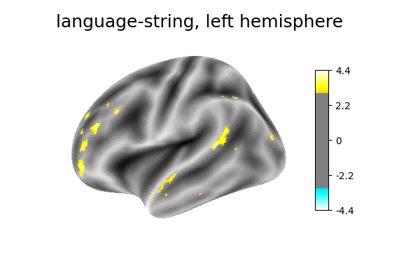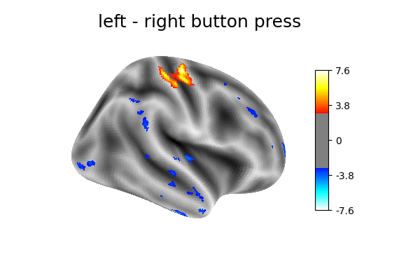Note
This page is a reference documentation. It only explains the class signature, and not how to use it. Please refer to the user guide for the big picture.
nilearn.glm.Contrast#
- class nilearn.glm.Contrast(effect, variance, dim=None, dof=10000000000.0, contrast_type='t', tiny=1e-50, dofmax=10000000000.0)[source]#
The contrast class handles the estimation of statistical contrasts on a given model: student (t) or Fisher (F). The important feature is that it supports addition, thus opening the possibility of fixed-effects models.
The current implementation is meant to be simple, and could be enhanced in the future on the computational side (high-dimensional F contrasts may lead to memory breakage).
- __init__(effect, variance, dim=None, dof=10000000000.0, contrast_type='t', tiny=1e-50, dofmax=10000000000.0)[source]#
- Parameters
- effectarray of shape (contrast_dim, n_voxels)
The effects related to the contrast.
- variancearray of shape (n_voxels)
The associated variance estimate.
- dimint or None, optional
The dimension of the contrast.
- dofscalar, optional
The degrees of freedom of the residuals. Default=DEF_DOFMAX
- contrast_type{‘t’, ‘F’}, optional
Specification of the contrast type. Default=’t’.
- tinyfloat, optional
Small quantity used to avoid numerical underflows. Default=DEF_TINY
- dofmaxscalar, optional
The maximum degrees of freedom of the residuals. Default=DEF_DOFMAX.
Warning
This class is experimental. It may change in any future release of Nilearn.
- effect_size()[source]#
Make access to summary statistics more straightforward when computing contrasts
- effect_variance()[source]#
Make access to summary statistics more straightforward when computing contrasts
- stat(baseline=0.0)[source]#
Return the decision statistic associated with the test of the null hypothesis: (H0) ‘contrast equals baseline’
- Parameters
- baselinefloat, optional
Baseline value for the test statistic. Default=0.0.
- Returns
- stat1-d array, shape=(n_voxels,)
statistical values, one per voxel.
- p_value(baseline=0.0)[source]#
Return a parametric estimate of the p-value associated with the null hypothesis (H0): ‘contrast equals baseline’, using the survival function
- Parameters
- baselinefloat, optional
Baseline value for the test statistic. Default=0.0.
- Returns
- p_values1-d array, shape=(n_voxels,)
p-values, one per voxel
- one_minus_pvalue(baseline=0.0)[source]#
Return a parametric estimate of the 1 - p-value associated with the null hypothesis (H0): ‘contrast equals baseline’, using the cumulative distribution function, to ensure numerical stability
- Parameters
- baselinefloat, optional
Baseline value for the test statistic. Default=0.0.
- Returns
- one_minus_pvalues1-d array, shape=(n_voxels,)
one_minus_pvalues, one per voxel
- z_score(baseline=0.0)[source]#
Return a parametric estimation of the z-score associated with the null hypothesis: (H0) ‘contrast equals baseline’
- Parameters
- baselinefloat, optional,
Baseline value for the test statistic. Default=0.0.
- Returns
- z_score1-d array, shape=(n_voxels,)
statistical values, one per voxel
Examples using nilearn.glm.Contrast#

Surface-based dataset first and second level analysis of a dataset
